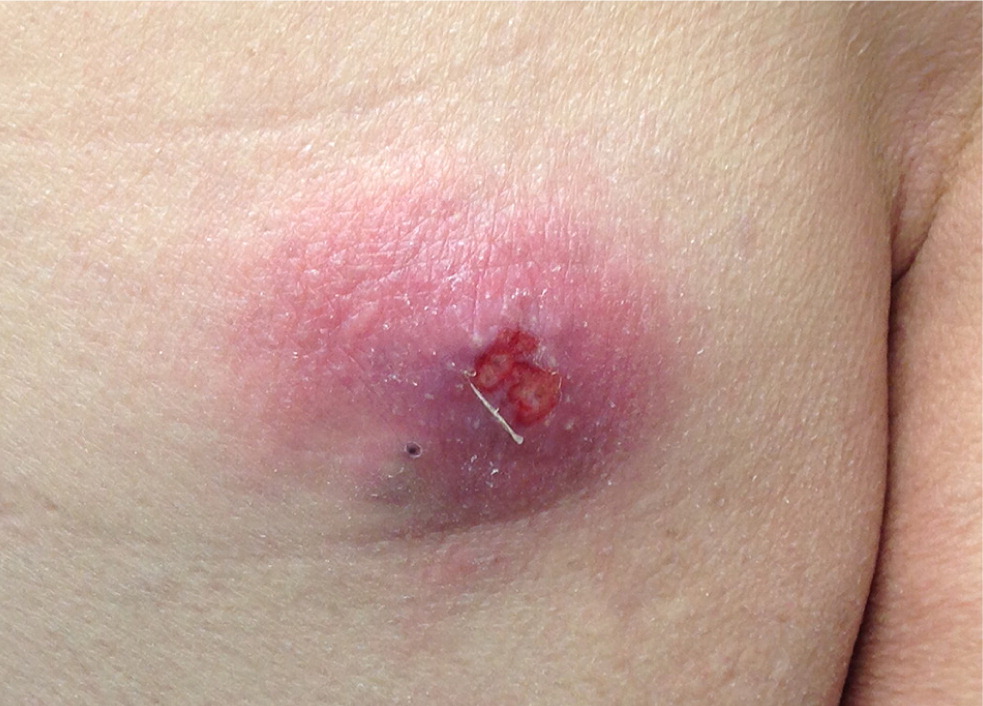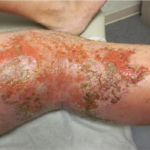Enterobacter cloacae, a gram-negative, facultatively anaerobic bacterium, is increasingly associated with complicated skin infections (CSIs), particularly in hospital-acquired and immunocompromised patients. Known for its antibiotic resistance, this pathogen can lead to severe infections requiring aggressive treatment strategies.

Pathophysiology and Mechanism of Infection
Enterobacter cloacae commonly colonizes the gastrointestinal tract, but it can cause skin infections through open wounds, surgical sites, intravenous catheter sites, or burn injuries. Once inside the tissue, it triggers an inflammatory response, leading to cellulitis, abscess formation, or necrotizing infections.
Common Skin Infections Caused by Enterobacter Cloacae
1. Cellulitis
A superficial bacterial infection affecting the dermis and subcutaneous tissues. Symptoms include:
- Redness and warmth at the site of infection
- Swelling and pain
- Fever and systemic signs in severe cases
2. Necrotizing Fasciitis
A rapidly spreading, life-threatening infection requiring immediate surgical intervention. Symptoms include:
- Severe pain disproportionate to physical findings
- Skin discoloration and necrosis
- Gas formation under the skin (crepitus)
3. Abscesses and Wound Infections
Localized pus-filled infections often requiring incision and drainage. These infections are frequently seen in postoperative patients and trauma victims.
Risk Factors
Certain individuals are at a higher risk of Enterobacter cloacae-related skin infections, including:
- Immunocompromised patients (e.g., diabetes, cancer, HIV)
- Hospitalized individuals with invasive devices (catheters, ventilators)
- Post-surgical patients
- Elderly individuals with comorbidities
- Patients receiving prolonged antibiotic therapy (leading to multidrug resistance)
Diagnosis
Diagnosis involves clinical assessment and laboratory tests, including:
- Gram staining and culture from wound exudate
- Blood cultures (if systemic involvement is suspected)
- Imaging (CT/MRI) for deep tissue infections
- Antibiotic susceptibility testing to determine effective treatment
Treatment Strategies
1. Antibiotic Therapy
Due to its multidrug resistance (MDR), treating Enterobacter cloacae infections requires targeted antibiotic therapy. Commonly used antibiotics include:
- Carbapenems (Meropenem, Imipenem) – Reserved for MDR cases
- Fluoroquinolones (Ciprofloxacin, Levofloxacin) – Moderate activity but resistance is increasing
- Aminoglycosides (Gentamicin, Amikacin) – Often used in combination therapy
- Piperacillin-tazobactam – Used in less resistant cases
2. Surgical Intervention
- Debridement of necrotic tissue in severe infections
- Drainage of abscesses to reduce bacterial load
- Amputation in cases of extensive tissue damage (rare but necessary in severe necrotizing fasciitis)
3. Supportive Care
- IV fluids and electrolyte management for septic patients
- Pain control and wound care
- Monitoring for systemic spread (e.g., blood infection)
Prevention and Control
1. Hospital Infection Control Measures
- Strict hand hygiene protocols
- Proper sterilization of surgical instruments
- Regular screening and isolation of MDR bacteria carriers
2. Patient-Specific Strategies
- Diabetic foot care to prevent ulcer infections
- Avoidance of unnecessary antibiotic use to prevent resistance
- Immediate wound care for cuts and burns

